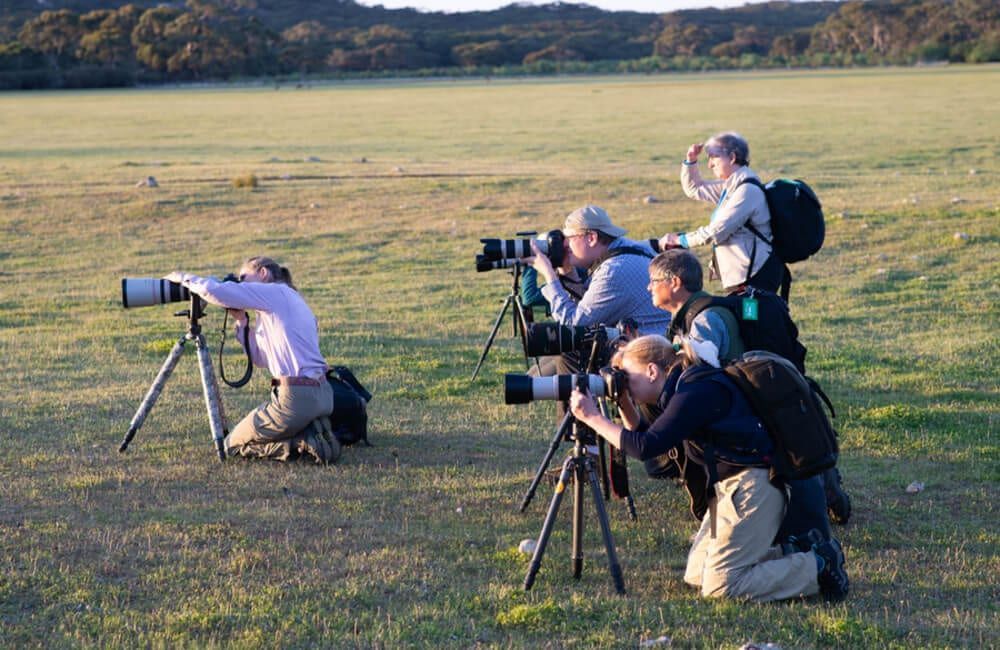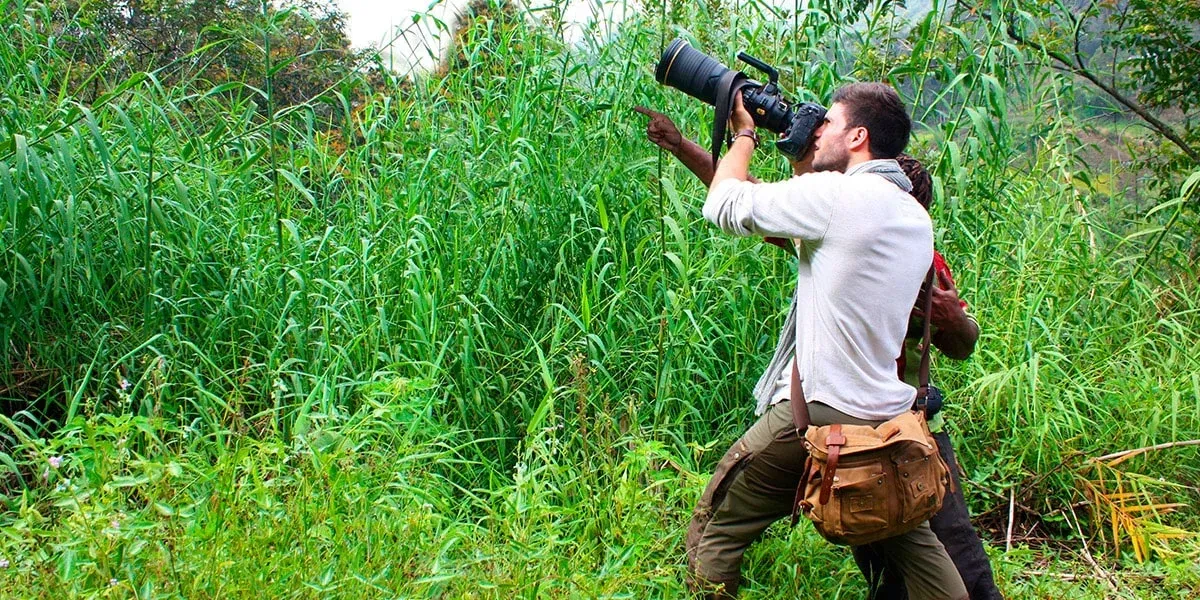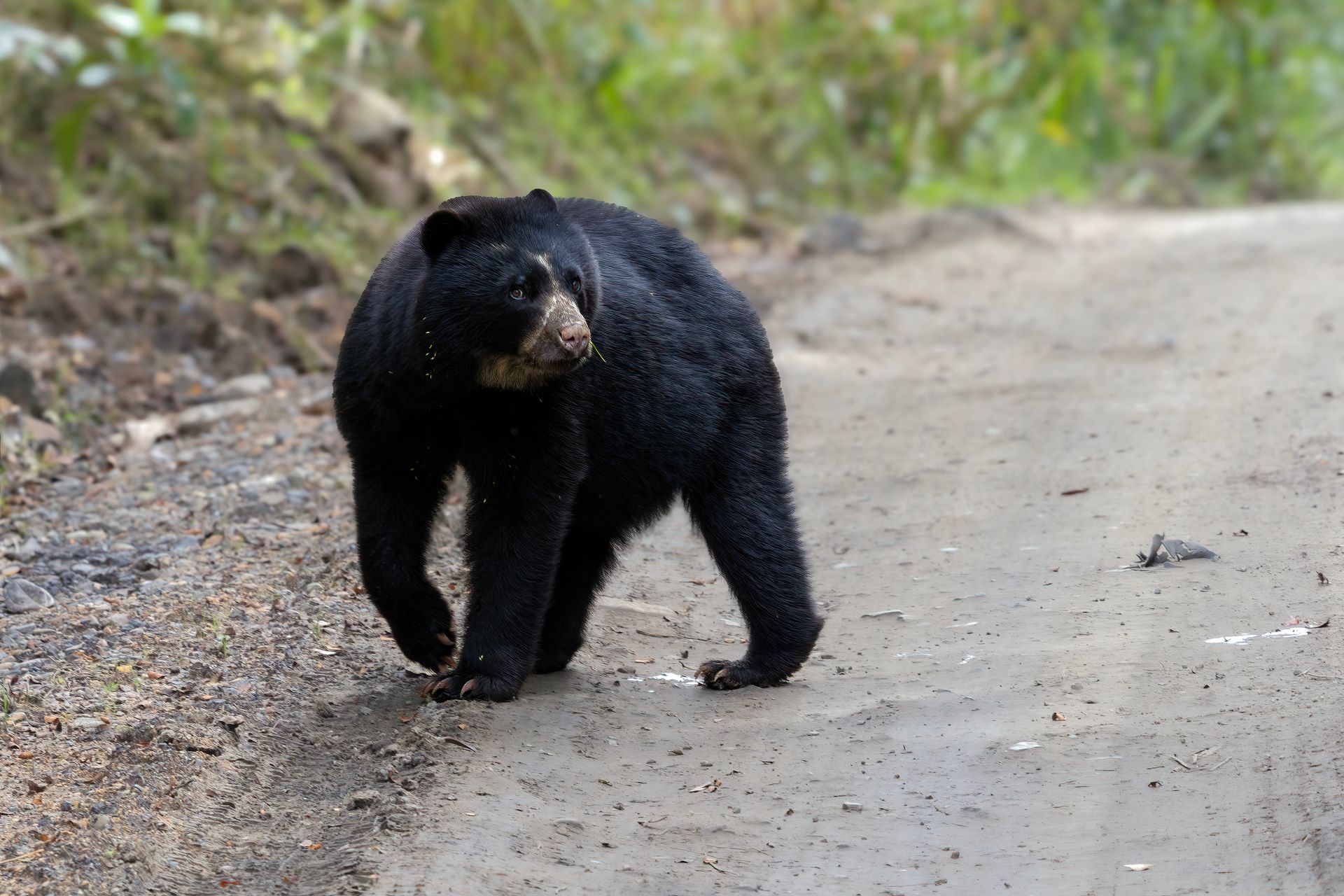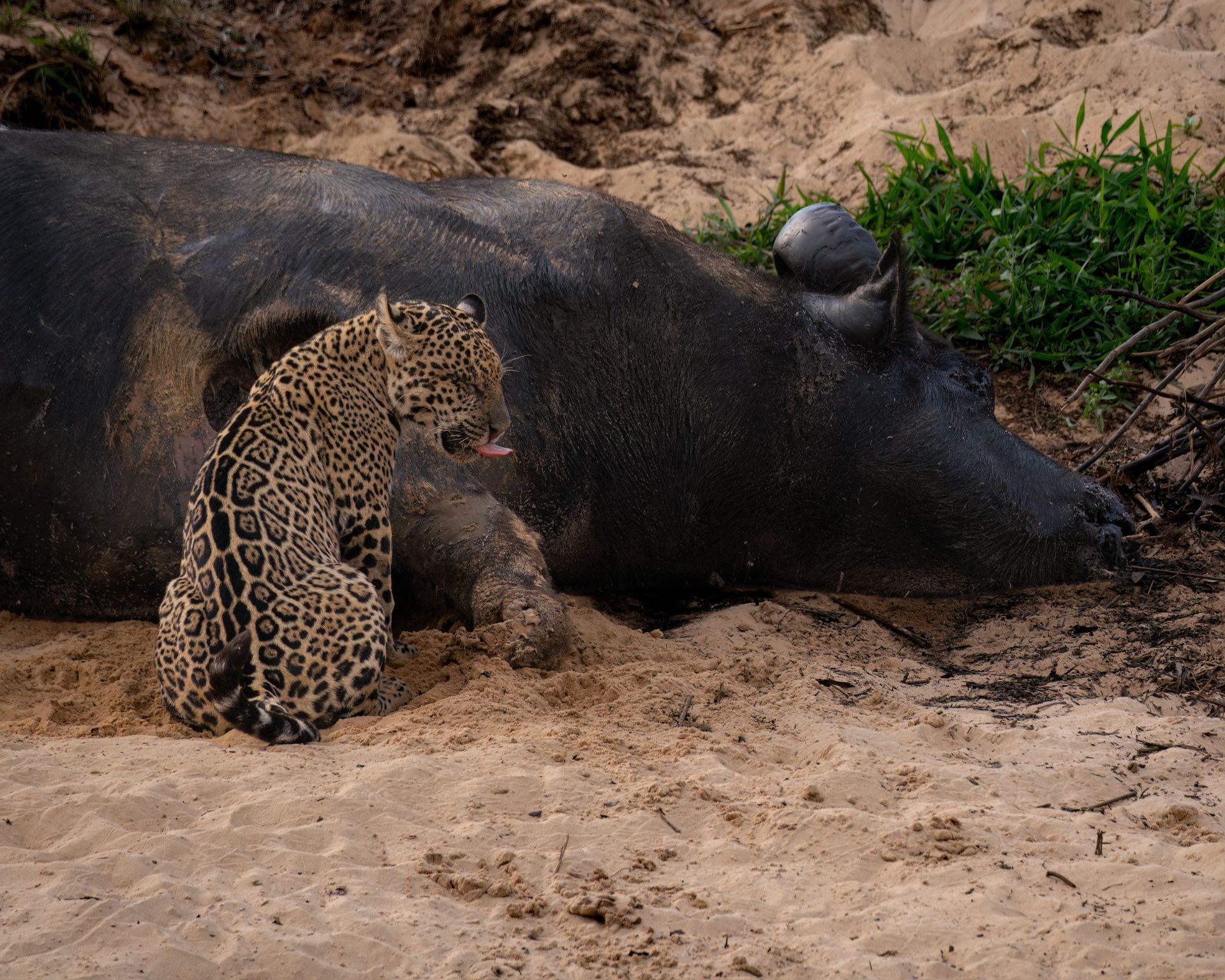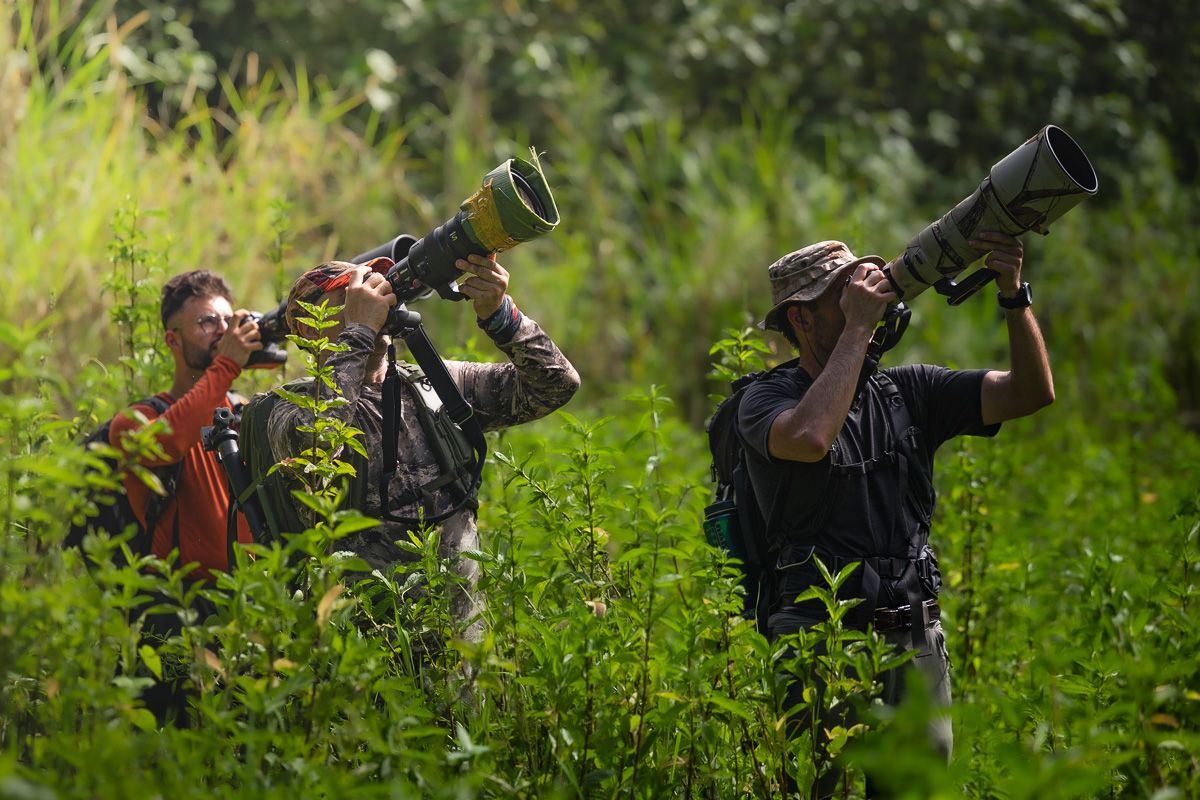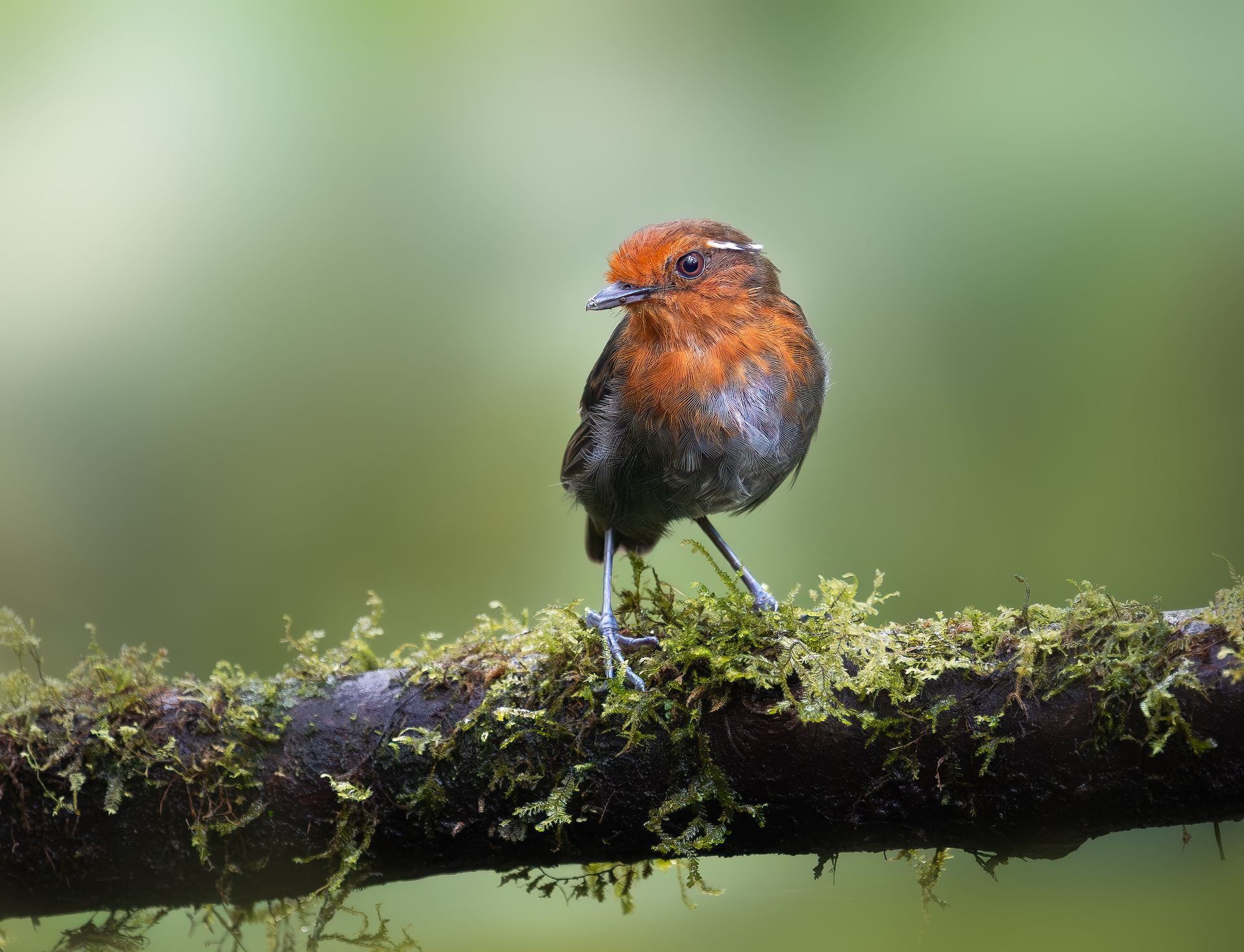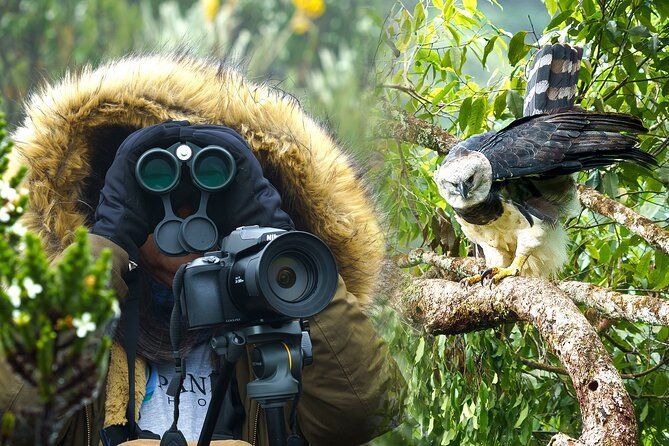Black-Tailed Trainbearer: The Iconic Bird of Colombia's Andean Trails
The Black-tailed Trainbearer (Lesbia victoriae) is one of the most graceful and iconic hummingbirds of the Andean highlands. With its long, flowing tail and emerald plumage, this species glides through the high-elevation landscapes of Colombia, leaving a visual impression as elegant as its name. A favorite among birders and photographers alike, the Black-tailed Trainbearer is a symbol of Colombia's mountainous biodiversity.
As a member of the hummingbird family, this avian jewel not only captures attention with its appearance but also plays a vital ecological role. It serves as a pollinator for various native plant species, contributing to the health of Colombia's Andean ecosystems. The Trainbearer's beauty, combined with its ecological importance, makes it an exciting and rewarding subject for nature photographers and conservationists alike.
What Makes the Black-Tailed Trainbearer Special
Exceptional Physical Traits
- Long Tail Feathers: Males have elongated, streamer-like tails that can be twice their body length, a characteristic that sets them apart from many other hummingbirds.
- Iridescent Plumage: Brilliant green feathers shimmer in the sunlight, especially under the crisp light of high-altitude regions.
- Compact Size: Despite their striking appearance, these birds measure only 12 to 17 cm, with the tail making up much of their length.
Behavior and Adaptation
- Dramatic Display Flights: Males engage in acrobatic courtship displays during breeding season, showcasing their tail feathers in wide, sweeping arcs.
- High-Altitude Specialist: They thrive in paramo and upper montane scrub between 2,500 and 4,000 meters, well-adapted to thin air and cooler climates.
- Territorial Nature: Males are highly territorial, aggressively defending their nectar sources from rivals and even other bird species.
Prime Locations in Colombia
The Black-tailed Trainbearer is widely distributed across Colombia’s Eastern and Central Andes. These birds are typically found in open habitats with scattered shrubs, flowering plants, and light forest edges.
Top Spots for Viewing:
- Chingaza National Natural Park (Cundinamarca): This park provides ideal páramo conditions with abundant wildflowers and shrubs.
- Sumapaz National Park: Home to expansive paramo landscapes and well-maintained trails, it offers excellent opportunities to observe these hummingbirds in their natural habitat.
- Reserva Rogitama (Boyacá): A private conservation area known for its hummingbird diversity and accessible observation spots.
- Ocetá Paramo (Monguí): One of Colombia’s most scenic paramo regions, with consistent sightings of Black-tailed Trainbearers amidst breathtaking terrain.
These locations not only offer excellent chances for birdwatching but also provide stunning Andean backdrops, ideal for photographic compositions.
Best Time to Visit
Bird activity, weather conditions, and lighting all influence the success of a birding or photography expedition. Here are key seasonal considerations:
- Dry Season (December to March): Offers easier trail access, clearer skies, and longer periods of ideal lighting for photography.
- Early Mornings and Late Afternoons: These cooler periods are when hummingbirds are most active, making them the best times for observation and photography.
- Flowering Season: Align your visit with the blooming cycles of native plants such as Salvia, Puya, and Bomarea, which attract hummingbirds.
Recommended Gear
Photographing hummingbirds in high-altitude environments requires a combination of lightweight equipment and quick performance.
Photography Equipment:
- Camera Body: High-speed frame rate and fast autofocus are crucial. Full-frame cameras handle low light and detail better.
- Lens: 300mm to 500mm lenses are ideal. A zoom lens (e.g., 100–400mm) offers versatility, especially when working in tight or unpredictable settings.
- Tripod or Monopod: Stability is key during long waiting periods; a monopod offers better maneuverability on uneven terrain.
- Lens Hood and Filters: Help manage sunlight glare at high elevations.
- Weather Protection: Essential in mountainous terrain where conditions change rapidly. Waterproof covers for both gear and clothing are a must.
Tips for Capturing the Trainbearer
Success in photographing the Black-tailed Trainbearer comes from combining knowledge of behavior with technical preparation:
- Focus on the Tail: The trainbearer's long tail is its defining feature. Frame your shots to include the full tail, especially during display flights.
- Use Backdrops Wisely: Position yourself to capture backgrounds like misty mountains, blooming shrubs, or open skies for dramatic contrast.
- Wait at Favorite Perches: These hummingbirds often return to the same perch after feeding. Identify one and stay patient.
- Track Feeding Patterns: Look for clusters of flowers visited repeatedly. Station yourself nearby for action shots.
- Shoot with Wide Aperture: A shallow depth of field isolates the subject and creates pleasing bokeh effects.
- Use Silent Shutter Mode: Reduces disturbance and allows for candid behavior shots.
Ethical Photography Guidelines
Ethical wildlife photography ensures minimal impact on the subject and its environment:
- Avoid Flash Use: Flash can startle birds, especially during courtship or feeding. Rely on natural light whenever possible.
- Respect Nesting Zones: Never approach or photograph nests. Disturbing breeding birds can lead to nest abandonment.
- Support Local Conservation: Choose eco-lodges, local guides, and park services that promote conservation.
- Leave No Trace: Stick to trails, avoid trampling plants, and carry out all waste.
Cultural and Ecological Significance
The Black-tailed Trainbearer is more than a photographic subject. In local Andean cultures, hummingbirds are symbols of vitality, agility, and spiritual connection. Some communities view them as messengers or harbingers of good fortune. Ecologically, trainbearers and other hummingbirds serve as critical pollinators, helping maintain the health and reproduction of many Andean plant species.
Their presence in paramo ecosystems is also an indicator of environmental quality. A decline in hummingbird populations often signals disruptions in floral cycles, habitat degradation, or climate stress.
Explore with Retorno Photo Tours
At Retorno Photo Tours, we specialize in creating unforgettable birding and photography experiences in Colombia’s highlands.
Why Choose Us?
- Expert Local Guides: Our team has years of experience tracking hummingbirds in the Andes.
- Custom Trail Routes: We access remote trails and private reserves that are ideal for trainbearer sightings.
- Personalized Mentorship: Our guides assist with camera settings, field techniques, and composition to help you get the best shots.
- Sustainable Practices: We work with local communities and support conservation initiatives with every tour.
Our tours aren’t just about photography—they’re about connection. We help you engage with Colombia’s landscapes, wildlife, and culture on a deeper level.
Suggested Itinerary Sample
Day 1: Arrival in Bogotá – Meet and greet, orientation, and gear check.
Day 2: Chingaza National Natural Park – Full day of photography with early departure and packed meals.
Day 3: Sumapaz Páramo – Explore remote regions with chances to see multiple paramo species.
Day 4: Transfer to Boyacá – Visit Reserva Rogitama, afternoon garden photography session.
Day 5: Ocetá Páramo – High-elevation adventure with sunrise shoot.
Day 6: Cultural Day – Engage with local artisans and eco-guides.
Day 7: Final shoot and transfer back to Bogotá.
Conclusion
The Black-tailed Trainbearer is a symbol of the beauty and biodiversity found in Colombia’s Andean trails. From its glowing emerald plumage to the graceful arc of its tail, this bird represents nature’s artistry at its finest. Photographing it in the wild is more than a technical challenge—it’s a rewarding encounter with Colombia’s highland spirit.
Whether you're a seasoned wildlife photographer or a birding enthusiast on your first Andean expedition, the Black-tailed Trainbearer promises a memory that will linger long after the shutter clicks.
Join Retorno Photo Tours and immerse yourself in Colombia’s mountain majesty—where the air is thin, the flowers bloom bright, and the trainbearer glides like a ribbon of green through the paramo sky.



